Android Central Verdict
Bottom line: The Galaxy Z Fold 2 improves upon nearly every aspect of its predecessor, with a firmer hinge and a much larger cover display. It's an outstanding device for multitasking, and its three rear cameras make it great for photography, as well.
Pros
- +
Incredible hardware refinements over the previous model
- +
Battery life that easily lasts through the day
- +
One UI 3.1 is well-optimized for the folding form factor
- +
Impressive cameras that can be used in a variety of unique ways
- +
Future-proofed with powerful specs and 5G support
Cons
- -
Some apps don't scale well
- -
Display is still more fragile than traditional glass
- -
No IP-certified water resistance
- -
Extremely expensive with no bundled accessories
Why you can trust Android Central
It isn't often that I get to review a product that genuinely feels like part of the future in quite the way the Galaxy Z Fold 2 does. The first-gen Galaxy Fold came close, but the initial display woes combined with other compromises like the dinky cover screen served as reminders that we were still very much in the present.
With the Fold 2, Samsung has corrected these issues and doubled down on its reputation for outstanding build quality and display tech to create something that truly feels out of place in our current timeline; a marvel of modern engineering that somehow feels equal parts refined, experimental, niche, and practical.
Of course, it's also prohibitively expensive for most people. The Galaxy Z Fold 2 launched at $2,000 and is now on sale for $1,700, and even that demands a certain level of commitment to its ever-evolving (and ever-volatile) form factor.
Put simply, it's a luxury device aimed at consumers that, like Samsung itself, can afford to take risks and buy into experimental technologies. The good news is that for those customers, this is by far the most refined foldable phone on the market, and one of the best Android phones overall. With the Galaxy Z Fold 3 on the horizon, let's take a look at how the Z Fold 2 holds up in 2021.
Samsung Galaxy Z Fold 2 Price and availability
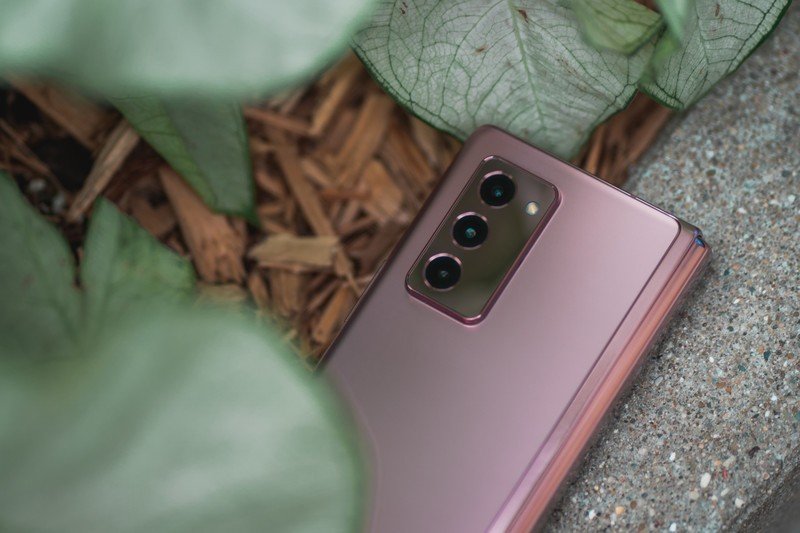
The Galaxy Z Fold 2 was introduced on September 18, 2020 alongside the Note 20 series. The foldable launched for $2,000, but a few months following its debut, Samsung slashed the price to $1,800.
The Z Fold 2 is available in most global regions where Samsung has an official presence, so it shouldn't be too difficult to get your hands on the device if you've decided that the foldable is to your liking. The device is sold in Mystic Bronze and Mystic Black variants, and comes with 12GB of RAM and storage sizes of 256GB and 512GB.
Hardware of the future
Get the latest news from Android Central, your trusted companion in the world of Android
Samsung Galaxy Z Fold 2 What I like

The Galaxy Z Fold 2 has a familiar design for anyone who's gone hands-on with the original Galaxy Fold before, but it improves upon its predecessor's hardware in nearly every meaningful way. The hinge is dramatically more rigid, and can hold its position at nearly any angle this time around — for context, the first-gen Fold simply clicked into place when either fully open or shut.
| Category | Samsung Galaxy Z Fold 2 |
|---|---|
| Operating System | Android 11, One UI 3.1 |
| Cover Display | 6.2 inches, 25:9, 2260x816 (386 ppi) resolution, Super AMOLED |
| Inner Display | 7.6 inches, 22.5:18, 2208x1768 (373 ppi) resolution, Dynamic AMOLED 2X |
| Chipset | Snapdragon 865+ |
| Memory | 12GB |
| Storage | 256GB |
| Expandable Storage | No |
| Rear Camera | 12MP, ƒ/1.8, 1.8μm (wide-angle) 12MP, ƒ/2.2, 1.12μm (ultra-wide) 12MP, ƒ/2.4, 1.0μm (telephoto) |
| Front Camera | 10MP, ƒ/2.2, 1.22μm (x2) |
| Security | Side-mounted sensor |
| Battery | 4500mAh 25W Fast Charging 11W Fast Wireless Charging 4.5W Wireless PowerShare |
| Dimensions | 159.2 x 68.0 x 16.8mm (folded) 159.2 x 128.2 x 6.9mm (unfolded) |
| Weight | 282g |
| Colors | Mystic Bronze, Mystic Black |
That rigidity allows for some new use cases that we'll talk about in a bit, but it also just makes the phone feel more intentional and less like a prototype; with so little give, it doesn't feel like you're snapping the phone in half when you open it anymore, despite requiring a touch more force than last year to do so.
Internally, the hinge has been tweaked to include a self-cleaning "sweeper" inside, which Samsung says was inspired by the brushes in vacuum cleaners, and help keep dust and debris from getting under the display. We first saw this sweeper hinge in the Galaxy Z Flip, but the one in the Z Fold 2 is 25% smaller, allowing Samsung to shrink the gap between display halves versus last year's Fold.
Just like we saw on the Note 20 Ultra, the Z Fold 2 has been given the matte glass treatment on its back panel, with Mystic Bronze and Mystic Black color options to choose from, though the hinge and midframe remain glossy. Whichever color you opt for, I absolutely love the look and feel of the matte glass, which does a great job at hiding fingerprints.
On the side of the phone, the power button and capacitive fingerprint sensor have been combined into one, which feels a bit cleaner and means you don't have to move your thumb around to unlock the phone anymore. You get stereo speakers, placed symmetrically along the top and bottom edges of the top panel, as well as a tiny earpiece slit atop the cover screen for phone calls.
That cover screen is one of the most significant improvements from the original Galaxy Fold, whose 4.6-inch display was frustratingly cramped to use for much more than checking notifications and short bursts of social media consumption. On the Z Fold 2, there's a far more useful 6.2-inch display that expands nearly edge to edge across the front panel.
Before you get too excited, though, remember that display sizes are measured diagonally, and that this cover screen has an extra-tall 25:9 aspect ratio. This isn't the same 6.2-inch display you'll find on the Galaxy S21 by any means. Still, it's much more akin to a typical smartphone experience than before, and I love that the narrow form factor makes the Fold 2 surprisingly usable in one hand when shut.

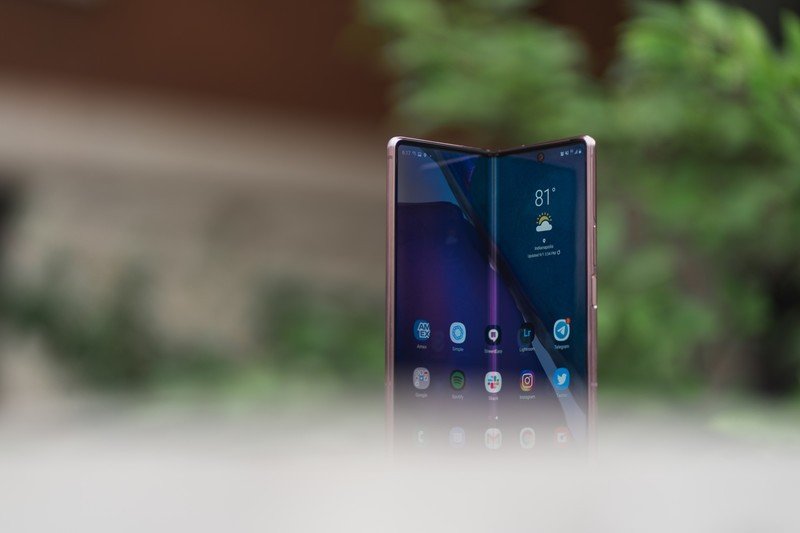

Having a truly useful cover screen really changes how you approach the Z Fold 2. You can treat it as you would any other phone. Though limited to just 60Hz, it's as bright and vibrant as we've come to expect from a Samsung panel, and the display is protected by Corning's latest Gorilla Glass Victus. The cover screen is admittedly still a bit too narrow for me to type on comfortably, but you can always resize the keyboard or install a third-party alternative.
The larger cover screen is perhaps the biggest improvement over last year's Fold.
Of course, the main reason you buy the Galaxy Z Fold 2 is for the inner display, not the cover screen — and what a display. Samsung swapped the plastic display of the original Galaxy Fold for Ultra-Thin Glass, otherwise known as UTG. Like the sweeper hinge, we first saw this implemented in the Galaxy Z Flip; it's essentially a hair-thin sheet of flexible glass paired with a protective polymer layer on top that keeps it from getting scratched.
Because of the polymer layer (as well as the additional screen protector that comes pre-installed and, as noted on the phone's care instructions, is not meant to be removed), the screen still feels more like plastic than glass, but the inclusion of the latter means the screen should be more durable — at least, in theory.
Like the cover screen, the inner display is colorful, bright, and sharp, and features two major upgrades: a hole-punch camera cutout in lieu of last year's enormous notch, and the same adaptive 120Hz refresh rate found on the Galaxy Note 20 Ultra, capable of going down to as little as 11Hz when the screen elements are static to save on battery life.
Yes, there's still a crease running down the middle of the display, but while it's a bit unsightly when looking at the Fold off-axis, it truly does disappear when looking dead-on.
Speaking of battery life, I've had no trouble getting through even the busiest of days with the Z Fold 2 on a single charge. The 4500mAh battery inside nets between 7 and 8 hours of screen-on time with my usage, and you can top it up with either 25W Fast Charging or 11W Fast Wireless Charging. Like Samsung's other flagships, the Z Fold 2 also features Wireless PowerShare, allowing it to deliver 4.5W to other devices, which is great for charging true wireless earbuds.
Samsung Galaxy Z Fold 2 Making the most of the inner display
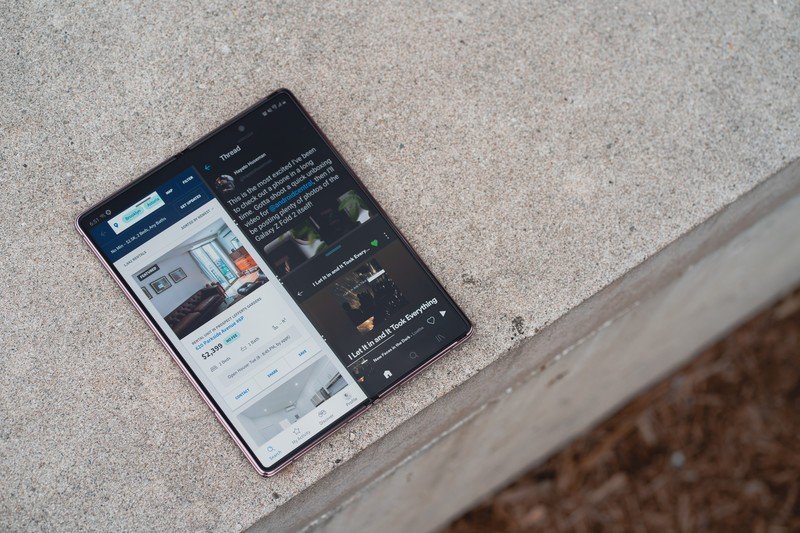
At 7.6 inches diagonally, the Z Fold 2's inner display is basically the same size as some small tablets like the iPad mini — but all of that screen space is only as useful as your workflow with it, and if you've never used a foldable before, it isn't immediately obvious how to take advantage of it.
One of the highlight features of the Z Fold 2 is Flex Mode, which automatically shifts UI elements around in select apps when you start to fold the display. Because the hinge is able to stay open at most angles, Flex Mode can be particularly great for propping the Z Fold 2 up on a table or other surface; in YouTube, for example, folding the display fills the top half with the video you're watching, and the bottom half with the description, comments, and recommended videos.
Edge Screen is an amazingly functional tool on the Z Fold 2.
Of course, not every app is compatible with Flex Mode — in fact, at the moment, most apps aren't, save for some of Samsung's built-in apps and a few gems like Netflix and Duo. But it works well where it's supported, and goes a long way towards making the phone feel more "complete."
Another area in which the Z Fold 2 really excels is multitasking. Running two apps side by side isn't anything unique to this phone; it's been a core feature of Android since version 7 Nougat. But the inner display provides enough room to run two full-screen apps simultaneously, each at roughly the same size as the cover screen.
You can quickly swap the apps' positions or choose between a vertical or horizontal split by tapping the divider between them, and even drag and drop text and other elements from one app to the other. If you really want to take full advantage of the massive inner display, you can add a third app to the split-screen view, and even open small floating app windows with adjustable transparency over the whole mix.
This type of split-screen multitasking is far more widely supported than Flex Mode, and if you tend to frequent a certain app pairing, you can save it as a preset using Edge Screen, then reopen it at any time. This actually works on either of the Z Fold 2's displays, though the cover screen can only run two apps at once, rather than three.
Samsung Galaxy Z Fold 2 A unique camera experience
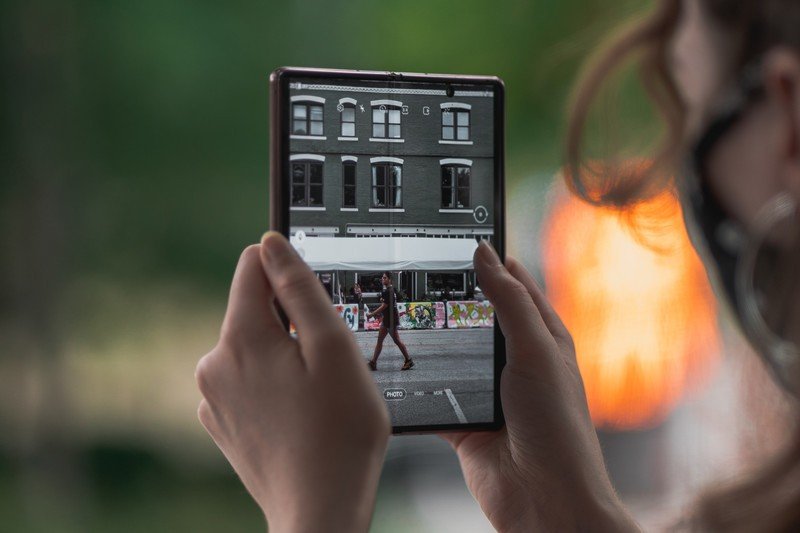
Photo and video capture is actually one of the areas where I found the Z Fold 2's form factor most useful. It's absolutely remarkable shooting with the massive inner display, which gives you a larger viewfinder to frame your shots than virtually any other phone, and Samsung's camera software has been optimized for Flex Mode to show a preview of your last shot on the bottom half of the screen when partially folded.
Combined with the stronger hinge, this allows the phone to act as its own tripod, which is perfect for capturing long exposures, shooting static video, or just getting a low-to-the-ground angle.
There's also a small button in the upper left corner of the software that lets you show the camera viewfinder on the cover screen while shooting with the inner display, giving your photo subject a preview of your shots in real-time. When launching the camera from the cover screen, that button sits in the upper right corner, and allows you to take selfies using the phone's main cameras, rather than the lower-quality front-facing camera.


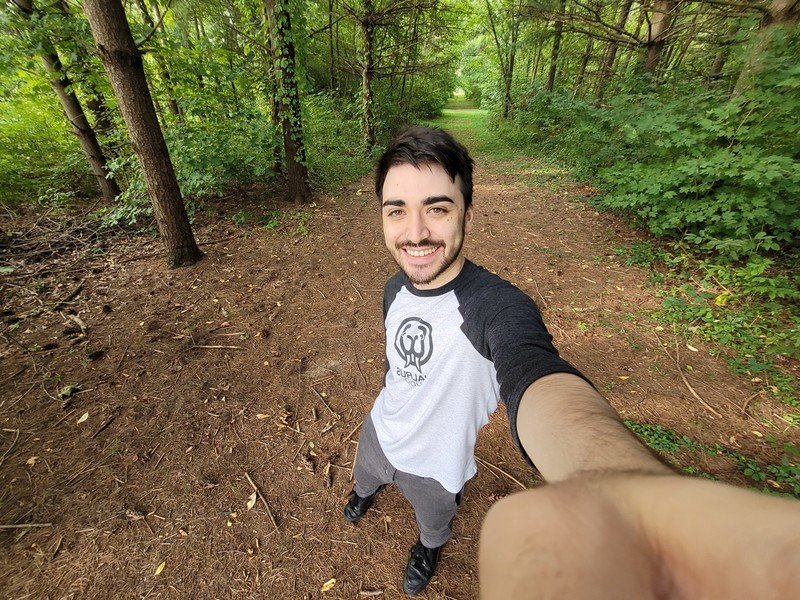
This is a fantastic use of the cover screen, but you'll most likely want to hold the Z Fold 2 by its back panel when shooting this way to avoid touching the on-screen controls. This makes it pretty difficult to reach the shutter button, but luckily you can still capture photos using the volume buttons or Samsung's palm detection, which automatically starts a three-second timer.
As for the cameras themselves, the Galaxy Z Fold 2 features a trio of 12MP cameras in the usual combo of wide, ultra-wide, and telephoto configurations. As with the Galaxy S20 series, Samsung ditched its dual aperture system on the Z Fold 2, and upped the sensor size on all but the telephoto camera.

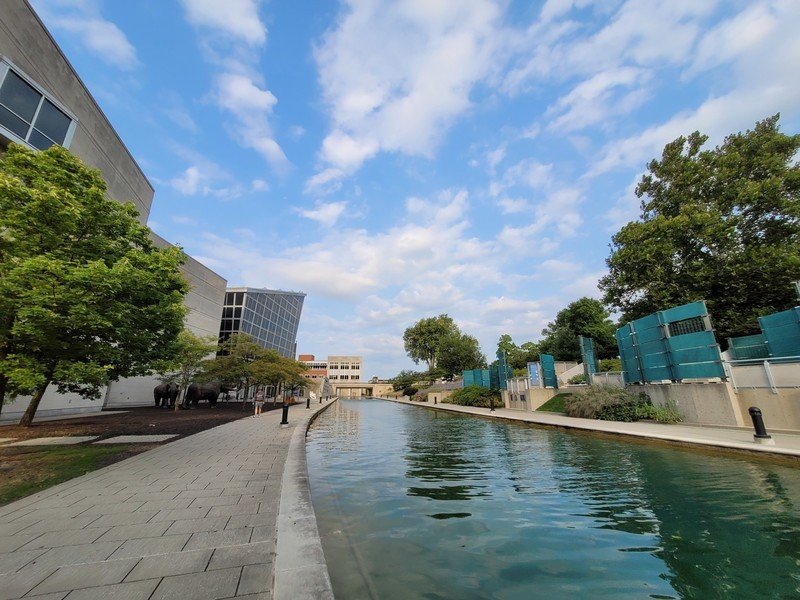


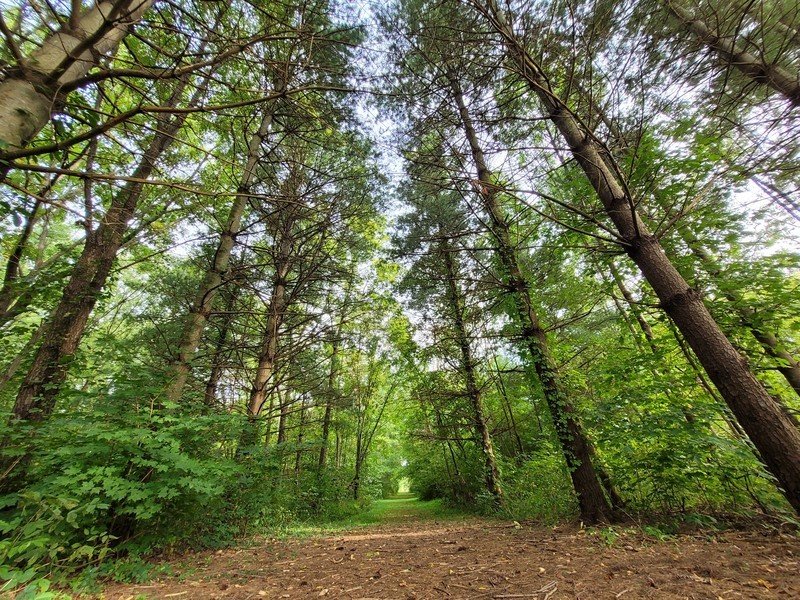
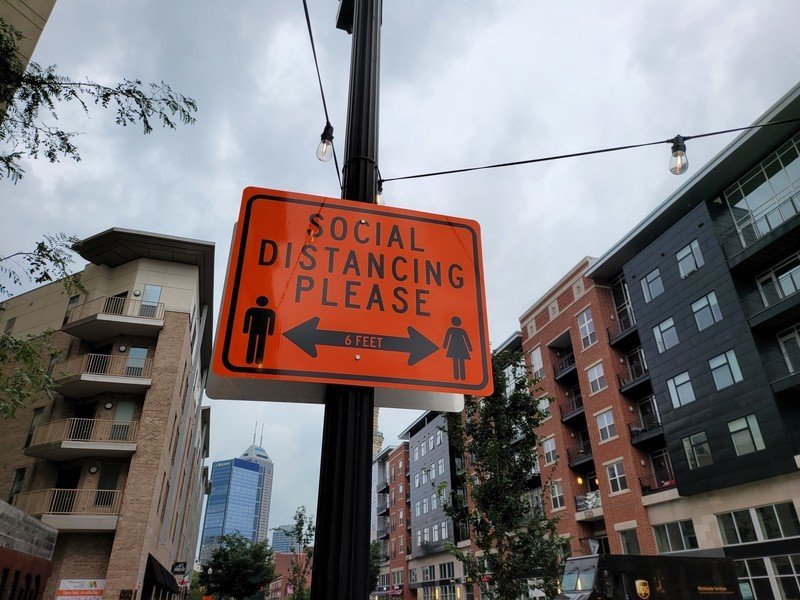




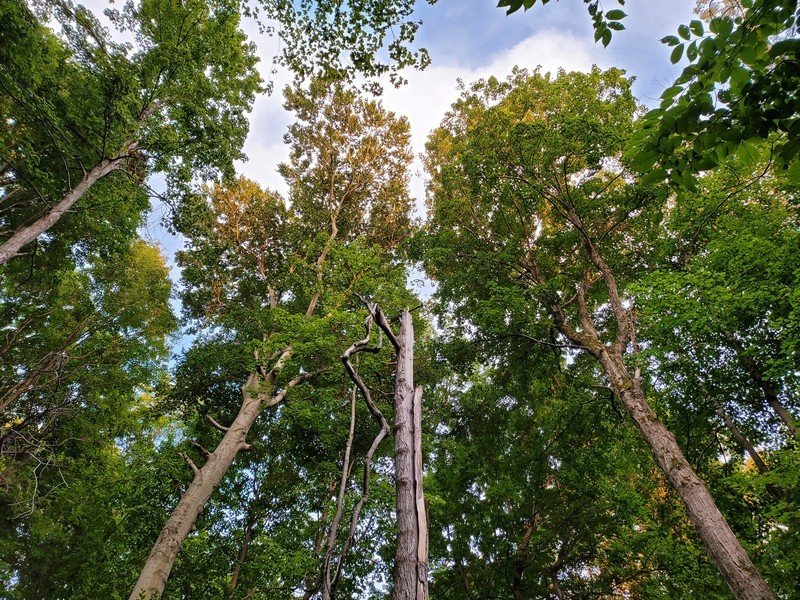



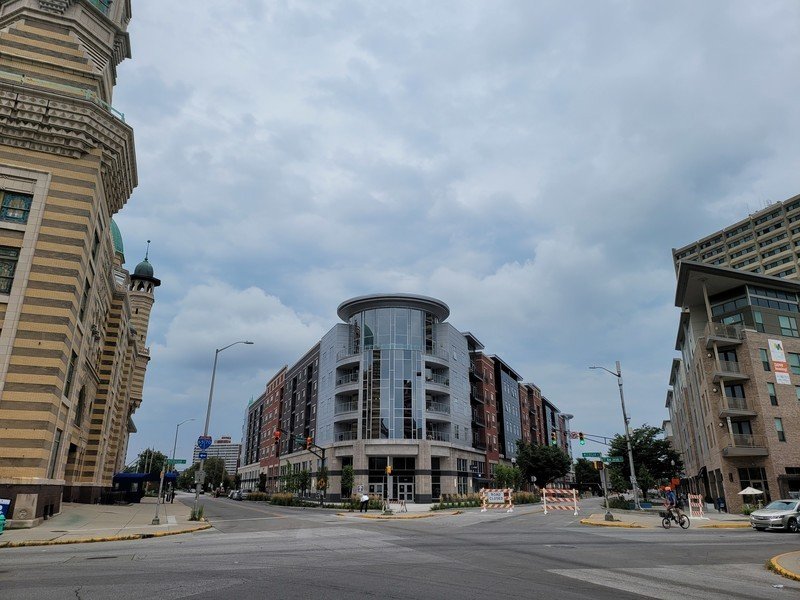
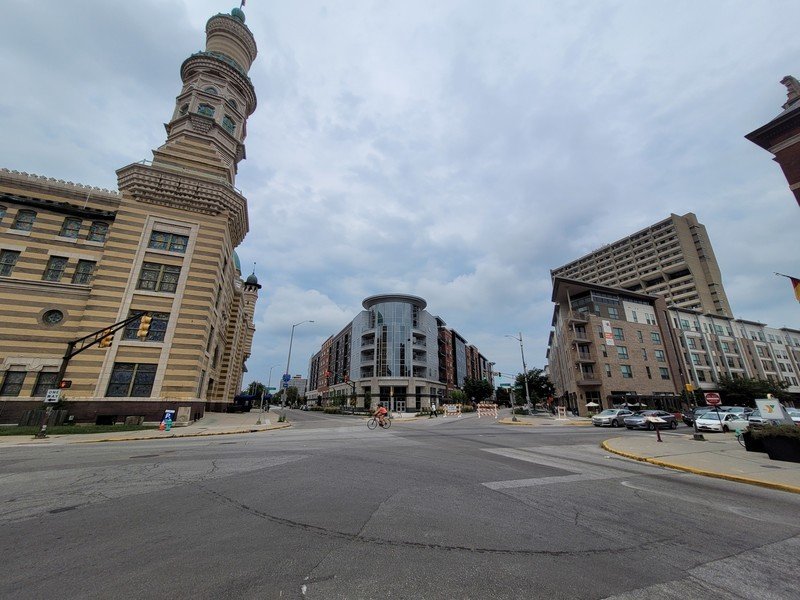
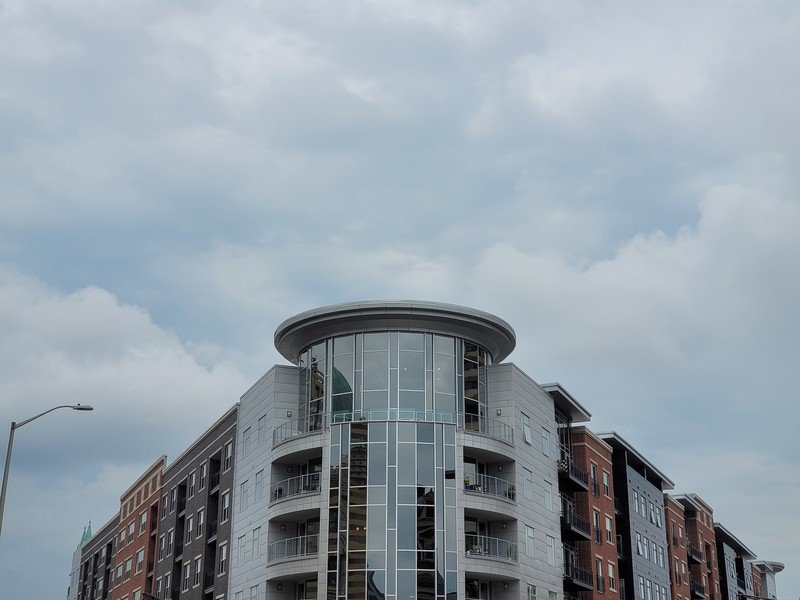
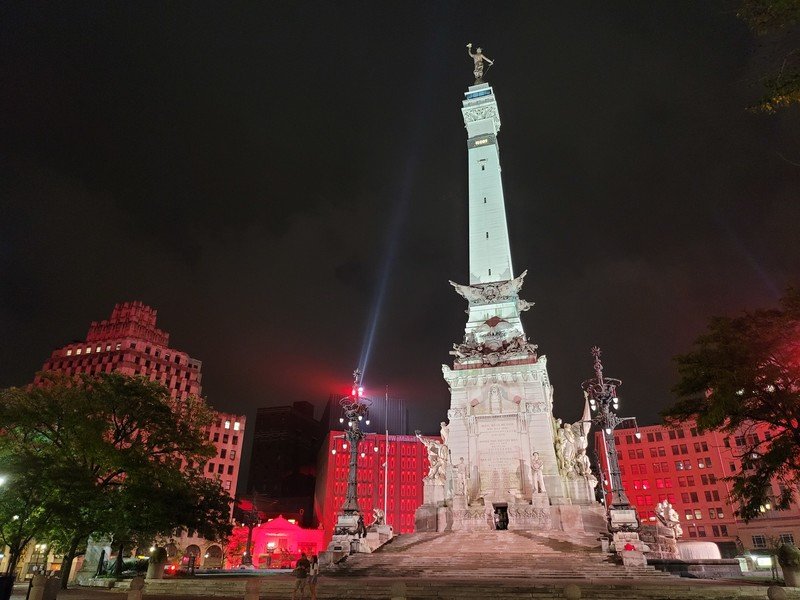

You won't get results comparable to that of the Note 20 Ultra's 108MP main sensor, but I've been impressed with the Z Fold 2's cameras nonetheless. Colors are pleasingly warm and punchy, shots are generally sharp with a fair amount of depth, and while I don't particularly care for Samsung's aggressive HDR effect, plenty of people in the replies to a sample photo I recently tweeted absolutely love the look.
What you won't find on the Galaxy Z Fold 2 is any kind of Super Resolution Zoom (the 2X telephoto can be pushed to 10X with digital zoom) or 8K video capture, instead maxing out at 4K60p. It's a bit of a letdown to not get the very best camera experience when you're paying $1,800, but considering how little room there is inside the Fold's thin body, it's more than understandable.
Software of today
Samsung Galaxy Z Fold 2 Where things fall flat
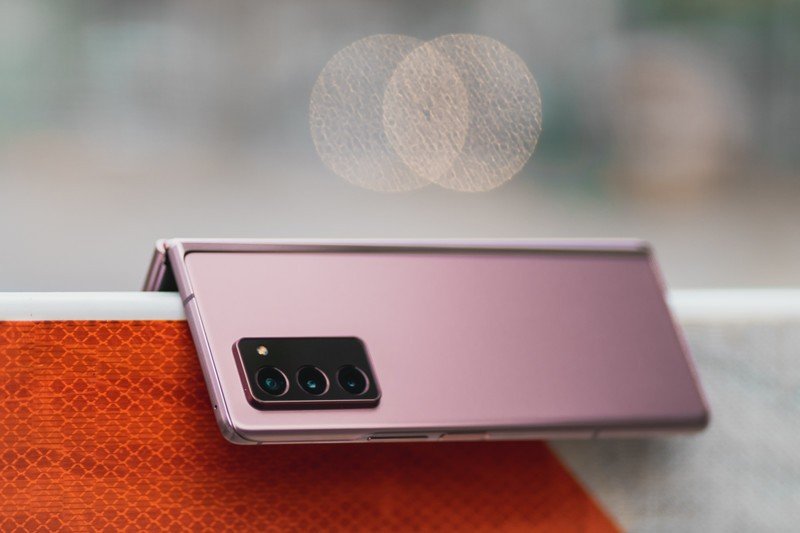
Let's address the elephant in the room, the Galaxy Z Fold's eye-watering $1,800 price tag. On one hand, that's $200 less than the launch price and more affordable than what the original Galaxy Fold launched at, but that phone came bundled with a protective case and a pair of Galaxy Buds in the box. With the Z Fold 2, all you get in the box is a charger; you'll need to buy the rest separately.
Of course, part of the Fold's high cost comes from the additional R&D that went into further developing the form factor, along with the expensive Snapdragon 865+ inside. Samsung is also including a concierge service called Z Premier with each Z Fold 2, which comes with perks like exclusive club memberships and meal deliveries. It's a bit excessive if you ask me, but this is Samsung's way of cementing the Z Fold 2 as a luxury item, and helps offset its cost a bit, assuming you actually take advantage of these perks.
I have to wonder if the Z Fold 2 could have been cheaper without some of the Z Premier perks.
One of the biggest roadblocks with any new form factor is app support. With Android 10 and continuing to Android 11, Google laid the groundwork for simpler development of resizable apps, and sure enough, most apps scale well to either of the Z Fold 2's displays. But it's up to Samsung to convince developers to work on Flex Mode, and as mentioned before, we're just not there yet.
I've also run into two particular apps that don't scale at all for the inner display: Instagram and Adobe Lightroom. Rather than expanding to fill the entire screen, you're given a roughly 16:9 app window with pillar-boxing on the sides. That actually works out for Instagram, since it prevents Stories from scaling up and cutting off information, but it renders Lightroom largely useless with the editing controls taking up far more space than the image you're working on.
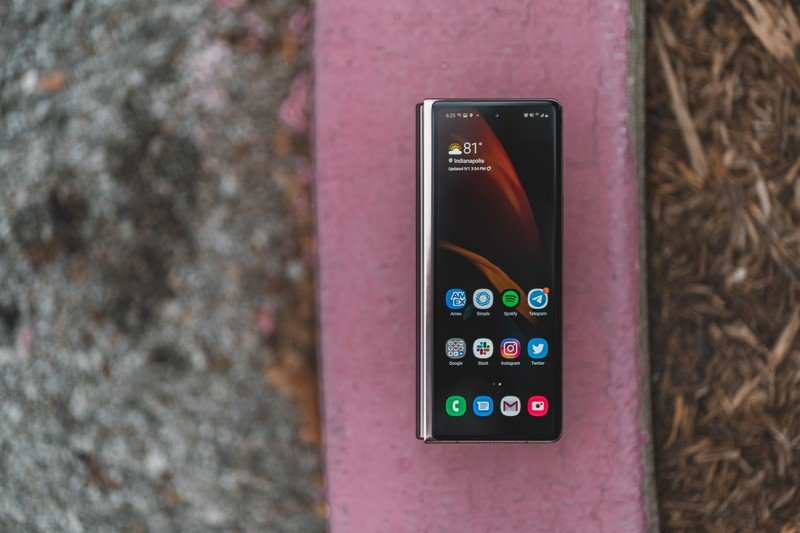
Curiously, Lightroom actually scaled just fine on the original Galaxy Fold, switching to a tablet view and filling the inner display.
Samsung also still has a durability hurdle to cross with its foldables. The Galaxy Z Fold 2's UTG display should be more reliable than the plastic substrate on its predecessor, but it's still much more fragile than traditional glass. The phone comes with a set of care instructions warning you not to apply too much pressure on the display with a fingernail or other sharp objects to avoid damaging it — though on the bright side, Samsung is giving away a one-time $150 screen repair service under its Z Premier program.
Those care instructions also point out that the Galaxy Z Fold 2 is not water-resistant. IP certification has become an expectation of nearly every high-end phone these days, but this is one aspect of the foldable experience that still hasn't caught up with the competition.
Samsung Galaxy Z Fold 2 The competition
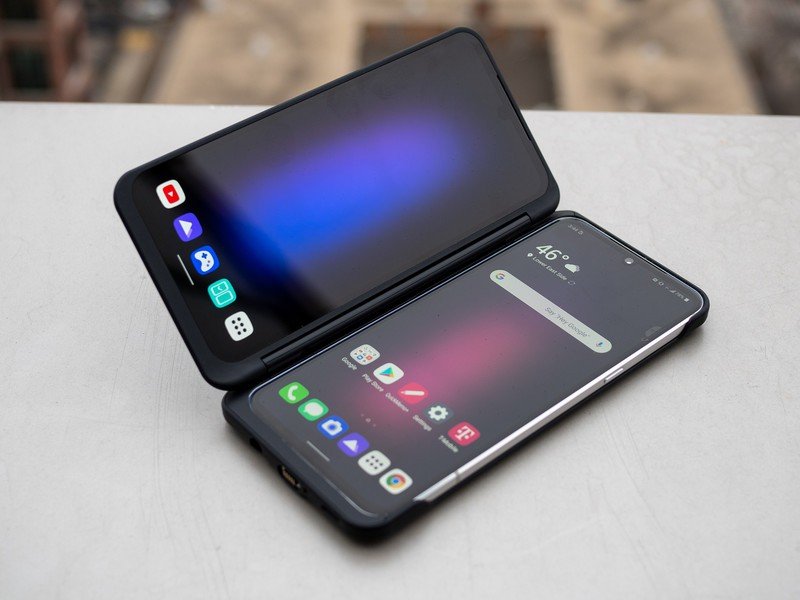
Outside of the U.S., Huawei's Mate XS serves as the most analogous alternative to the Galaxy Z Fold 2, with a slightly different form factor that places the large display on the outside of the device, negating the need for a cover display but providing less protection and creating different use cases. Within the States, though, there aren't many other foldables to compare the Z Fold 2 against.
The closest competition would be the LG Wing, with the phone offering dual screens and robust hardware. That said, the Wing also has its share of software woes, with LG failing to take full advantage of the dual-screen form factor.
If you're simply looking for a powerful 5G-capable phone and don't need any sort of foldable or dual-screen technology, the Galaxy S21 Ultra is the ideal option, and it costs significantly less than the Z Fold 2.
Samsung Galaxy Z Fold 2 Should you buy it?

You should buy this if ...
You want to live on the bleeding edge of mobile tech
The Galaxy Z Fold 2 has an incredibly futuristic design that's both functional and eye-catching. It's an excellent conversation starter, and the folding display allows you to multitask in ways that other phones aren't capable of. The Fold 2 is clear proof that foldables are here to stay.
You love to take photos with your phone
The three 12MP cameras on the Galaxy Z Fold 2 are versatile and powerful, and shooting with the large inner display is a completely unique experience. Of course, you can also use the cover screen to take high-quality selfies using the main cameras, and prop the phone up to take long exposures and night shots.
You have deeply lined pockets
For all its unique features and design traits, the Galaxy Z Fold 2 costs a pretty penny, regardless of whether you pay for it outright or split the cost into 48 monthly installments of $41.66. Samsung is softening the blow with high trade-in values, along with its Z Premier concierge perks, but not everyone will be able to justify spending this kind of money.
You should not buy this if ...
You rely on unsupported apps
For the most part, apps scale well to both the Z Fold 2's inner and cover screens, but as is often the case with experimental form factors, not every app works perfectly. If apps like Instagram and Adobe Lightroom are crucial to your daily routine, you might want to wait for the developers to optimize their services for foldable form factors.
You spend a lot of time outdoors
The Galaxy Z Fold is more durable than its predecessor, but it still lacks IP-certified water resistance of any kind. In addition, while its hinge has been reinforced with a sweeper brush designed to keep dust and debris out, the inner display is still more vulnerable than traditional glass, and could be damaged by large particulates.
4.5 out of 5
The Galaxy Z Fold 2 isn't cheap by any means, but it's an incredible device that offers an experience you won't find on many other gadgets. Samsung has done an outstanding job at solving the original Galaxy Fold's critical flaws, and offering new ways to make use of the delightfully unique design. It's hard to recommend anyone spend $1,800 on a smartphone, especially given the current state of the world, but if you can justify it for yourself, few other phones will take you as far for your money.
Samsung Galaxy Z Fold 2 Changelog, July 2021
This review went live on September 11, 2020, a week before the Z Fold 2 went up for order. It has been updated on July 1, 2021 with the following changes:
- Added pricing and availability details
- Made a note of the price decrease
- Added relevant software details
- Included LG Wing and Galaxy S21 Ultra as alternatives
If you're interested in what Samsung has to offer in 2021, be sure to look at our Z Fold 3 coverage.

Hayato was a product reviewer and video editor for Android Central.


